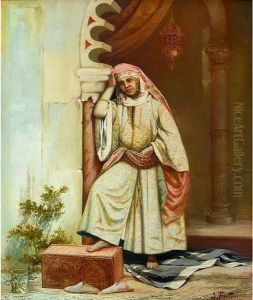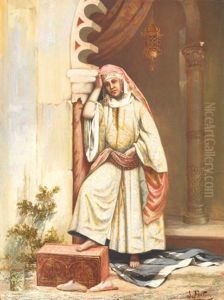Sante Fantoni Paintings
Sante Fantoni was an Italian sculptor and painter known for his contributions to the art world, particularly in the 20th century. Born in Bologna, Italy, in 1915, Fantoni was deeply influenced by the rich cultural heritage of his homeland, growing up in an environment steeped in the arts. His early years were marked by an exploration of various artistic mediums, but it was in sculpture that he found his true calling. Fantoni's work is characterized by its innovative use of materials and a unique blend of traditional techniques with modernist sensibilities, reflecting the dynamic changes in art during his lifetime.
Fantoni's education in art began in the prestigious academies of Italy, where he was trained in the classical traditions. However, his artistic journey was not confined to the boundaries of conventional education. The tumultuous period of the mid-20th century, marked by World War II and its aftermath, had a profound impact on Fantoni, influencing the themes and methods of his work. He sought to express the complexities of the human condition, delving into themes of struggle, resilience, and the enduring spirit of humanity. His sculptures, often in bronze or marble, showcased his exceptional skill in capturing both the strength and fragility of the human form.
Throughout his career, Fantoni participated in numerous exhibitions, both in Italy and internationally, earning recognition for his artistic achievements. His works were not only appreciated for their aesthetic beauty but also for their ability to evoke deep emotional responses from viewers. Fantoni's contributions to the arts were recognized with several awards and honors, cementing his reputation as a significant figure in the world of sculpting.
Sante Fantoni's legacy is preserved through his artworks, which continue to be displayed in galleries and public spaces around the world. His dedication to exploring the depths of human emotion and experience through sculpture has left an indelible mark on the art world. Fantoni passed away in 2002, but his influence endures, inspiring future generations of artists to pursue their creative visions with passion and integrity. His life and work exemplify the transformative power of art, demonstrating its ability to transcend boundaries and connect individuals across time and space.

